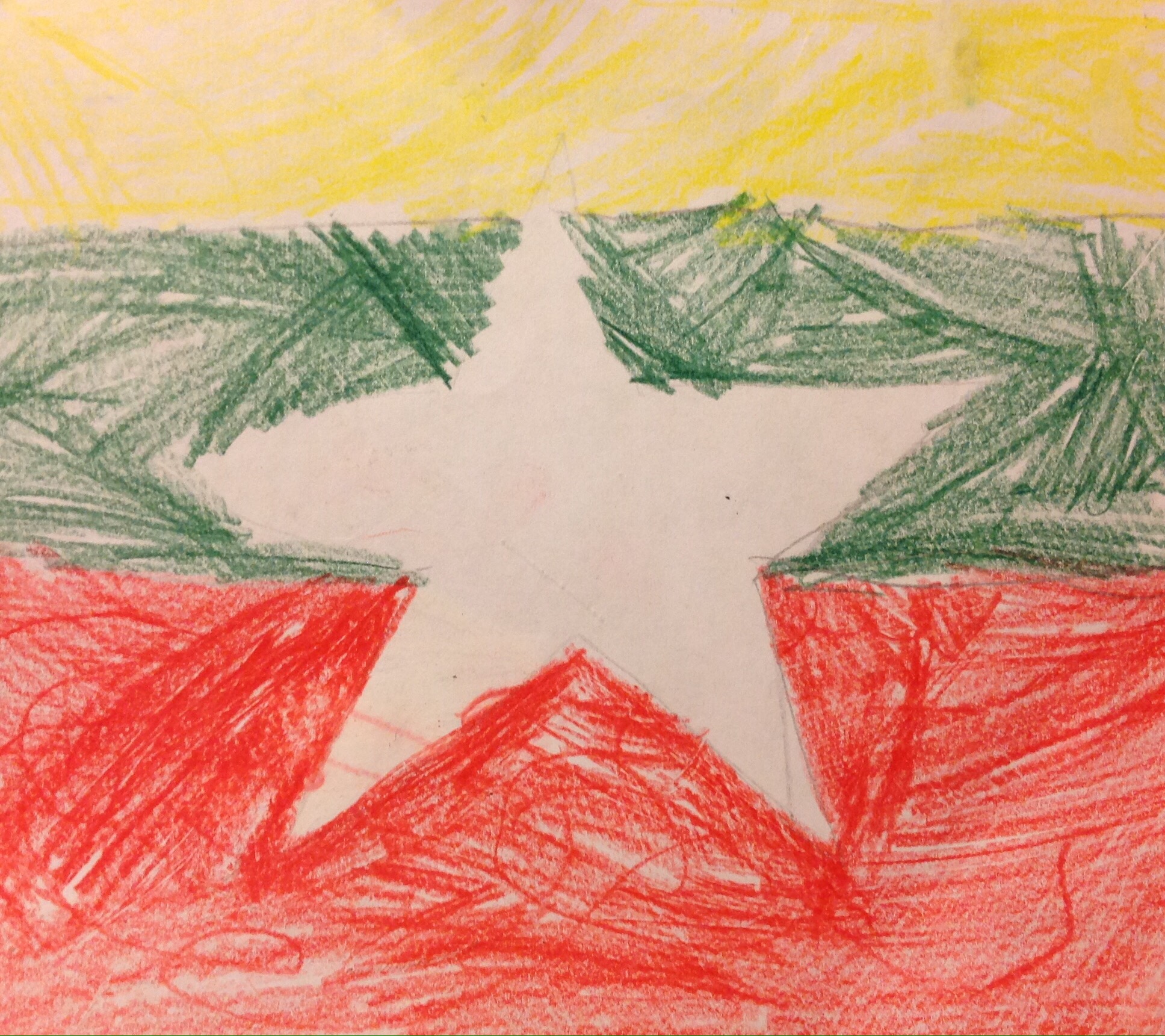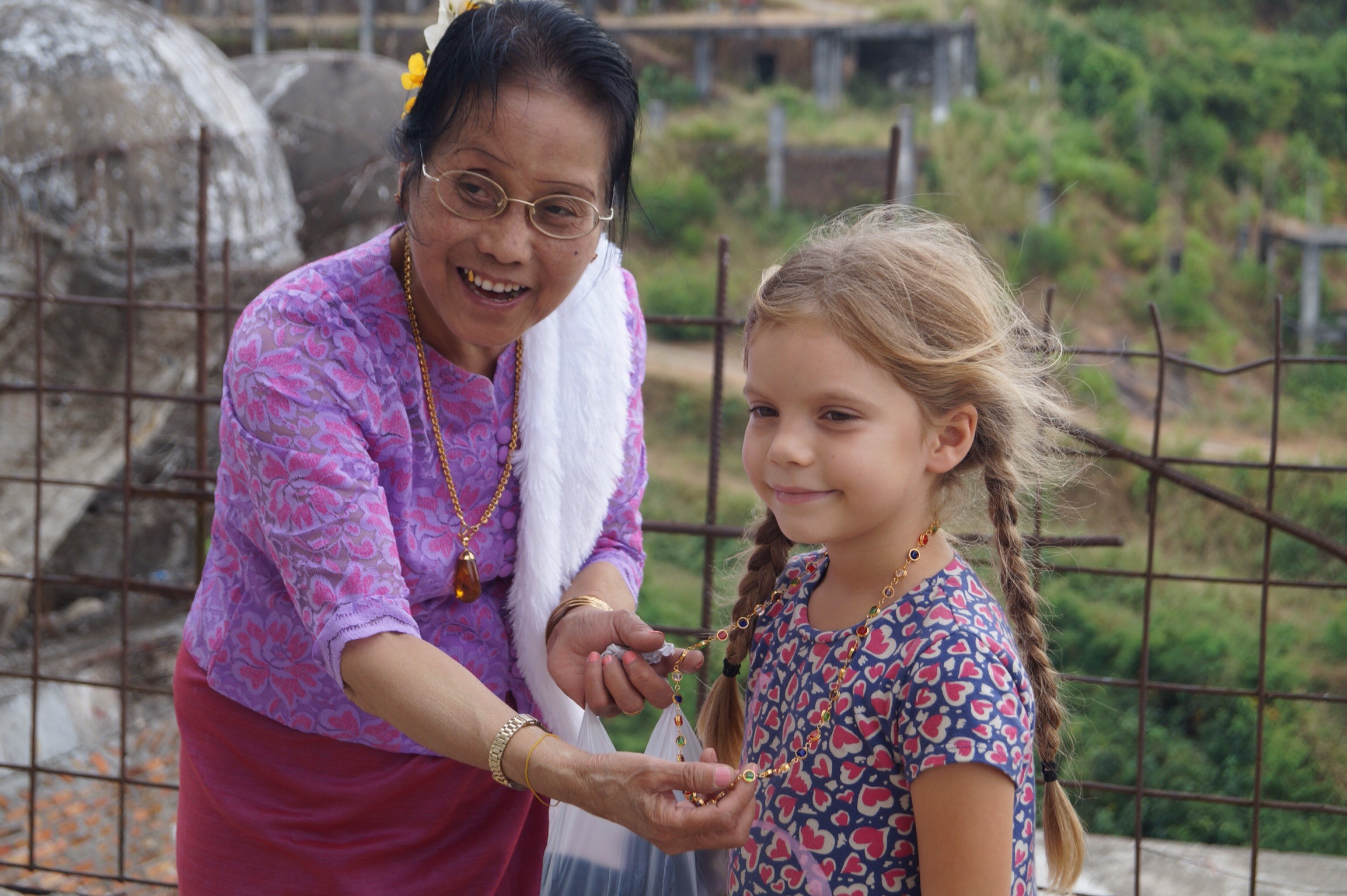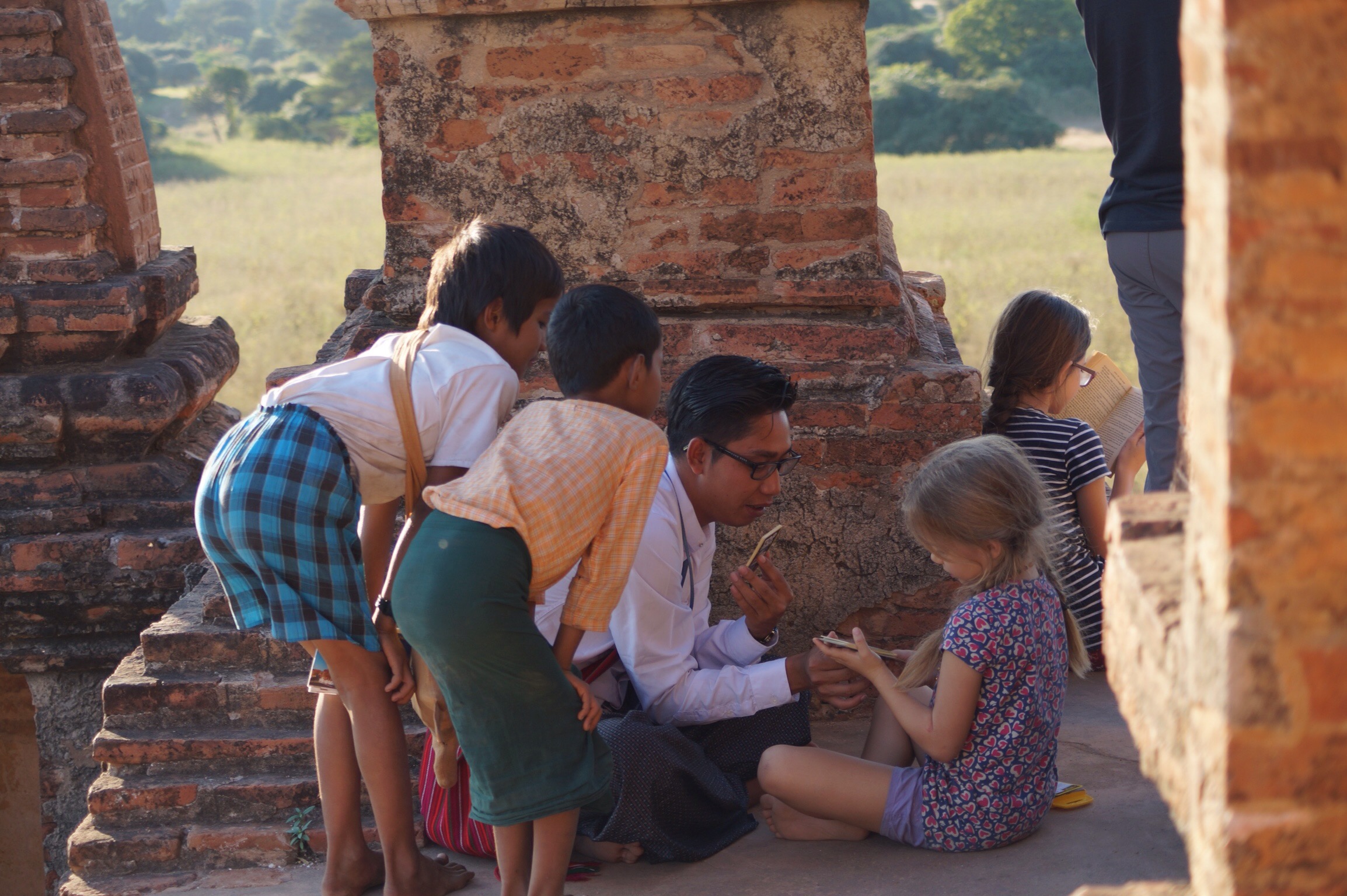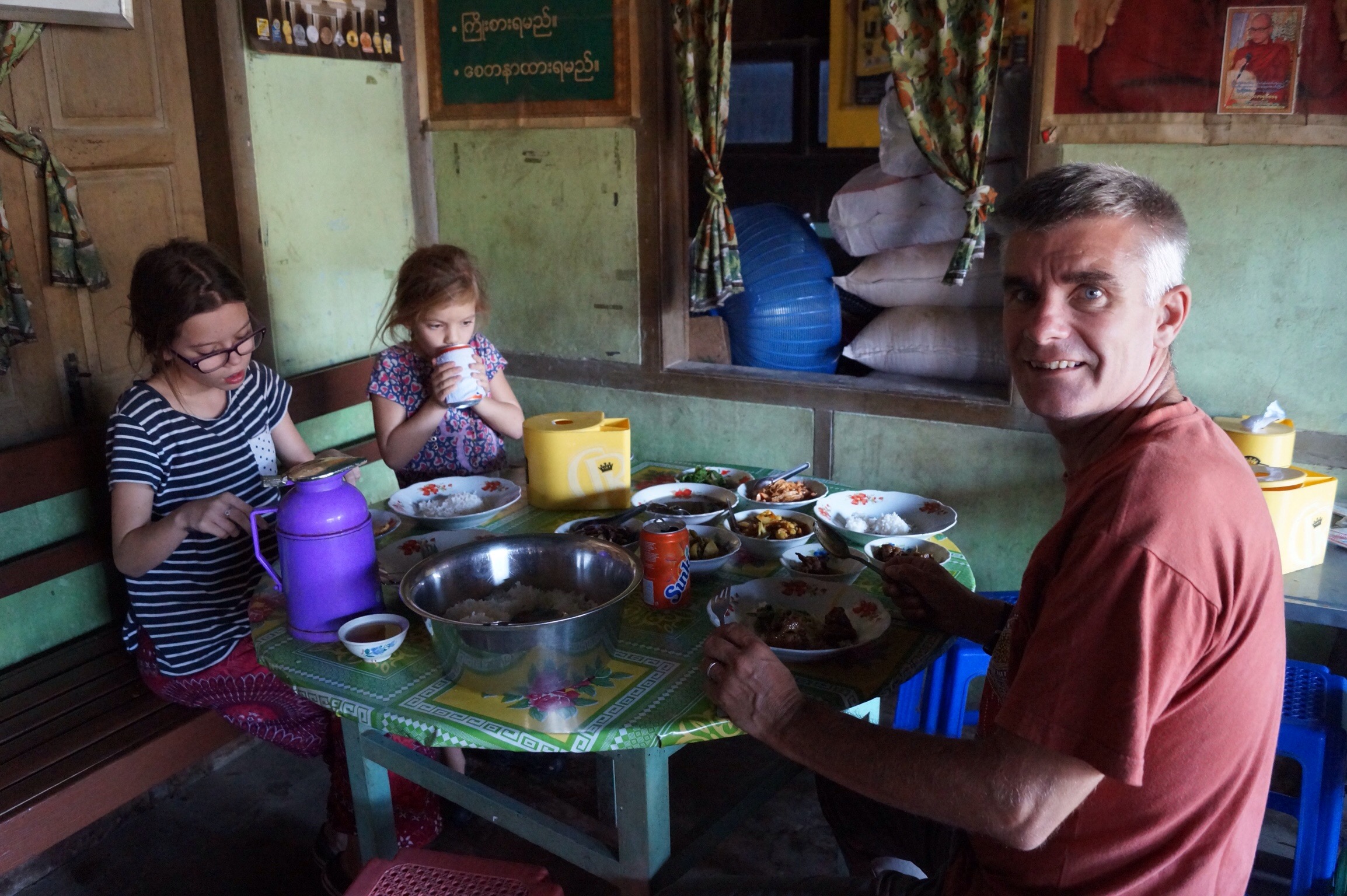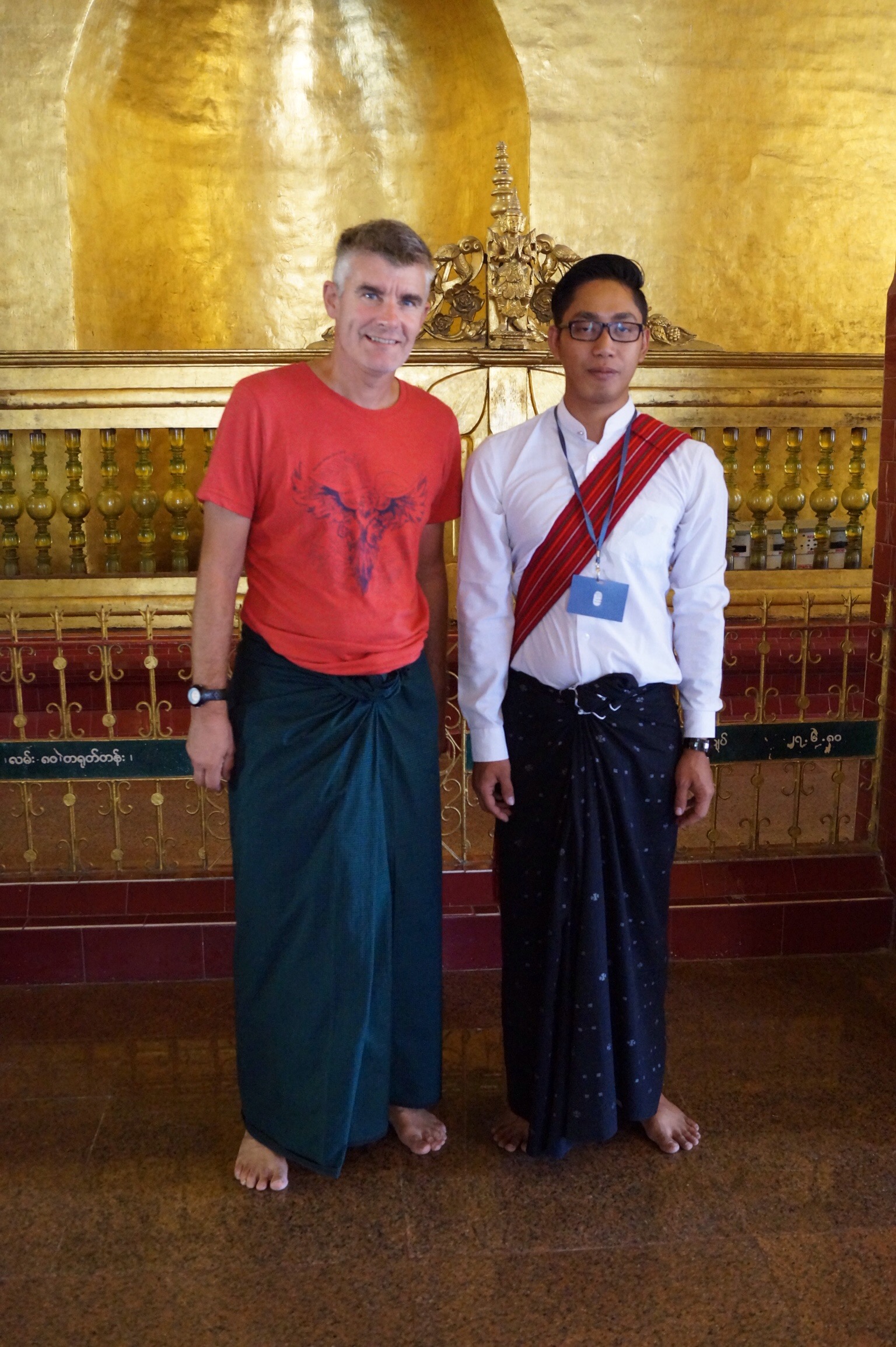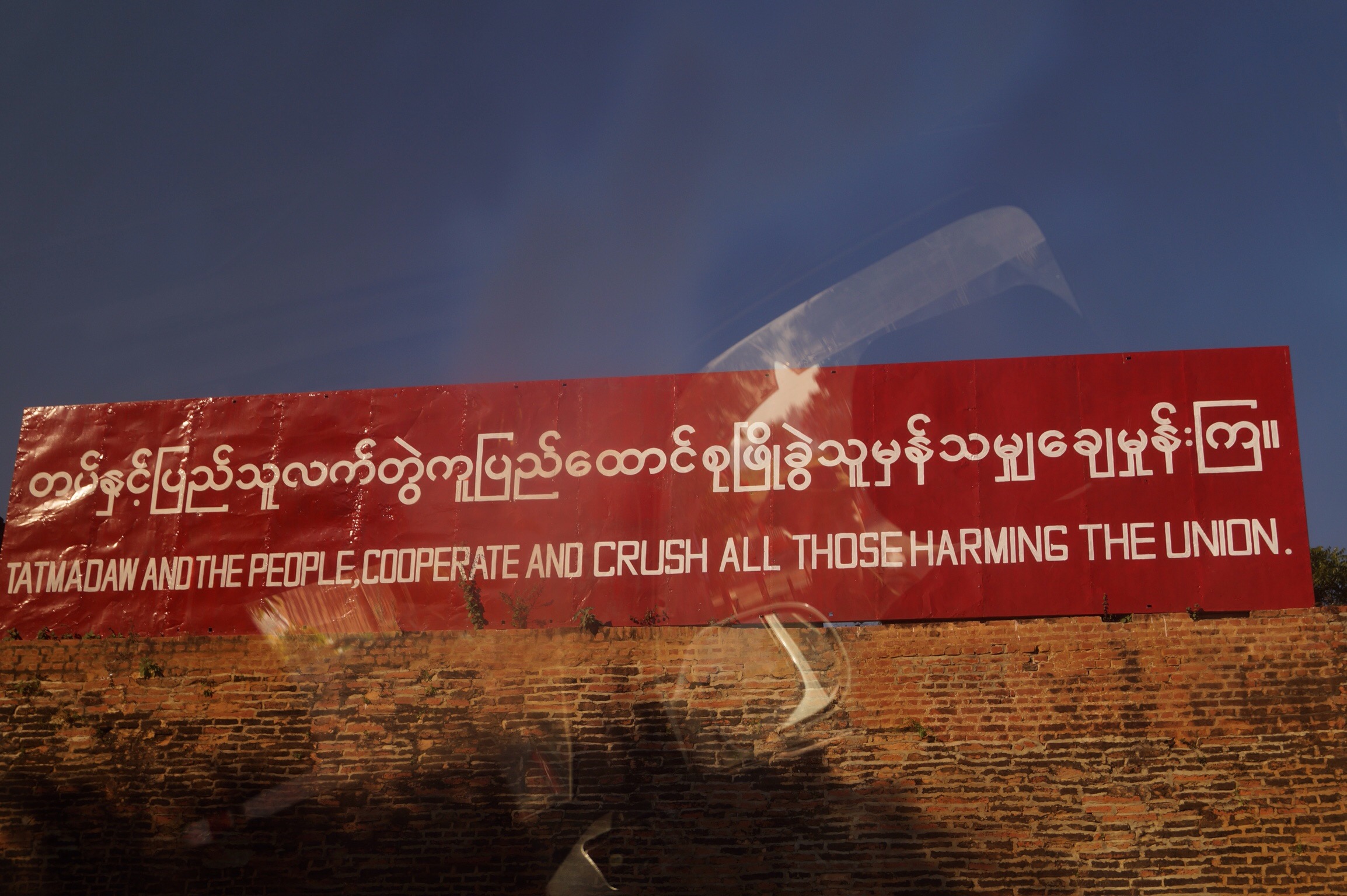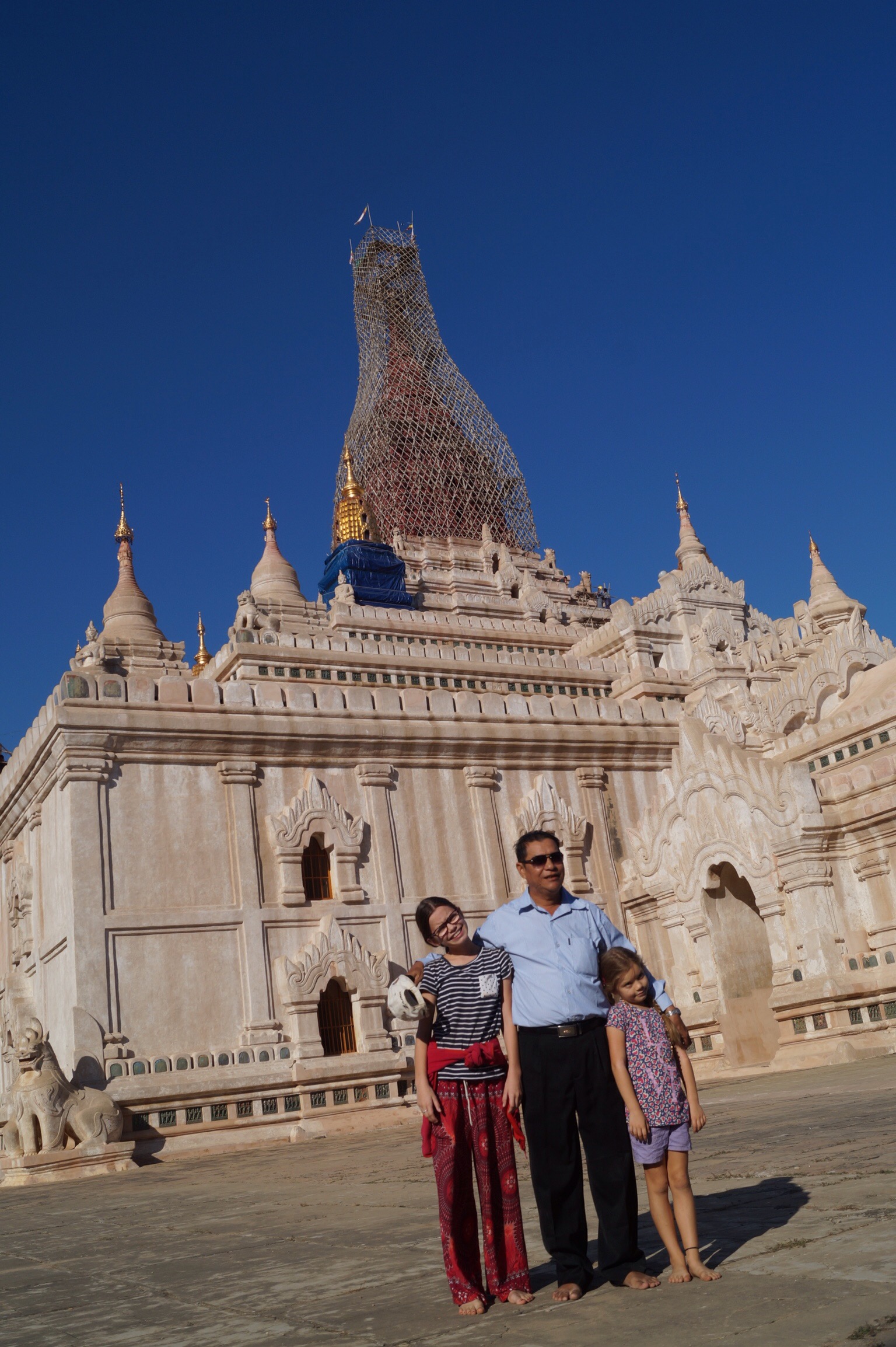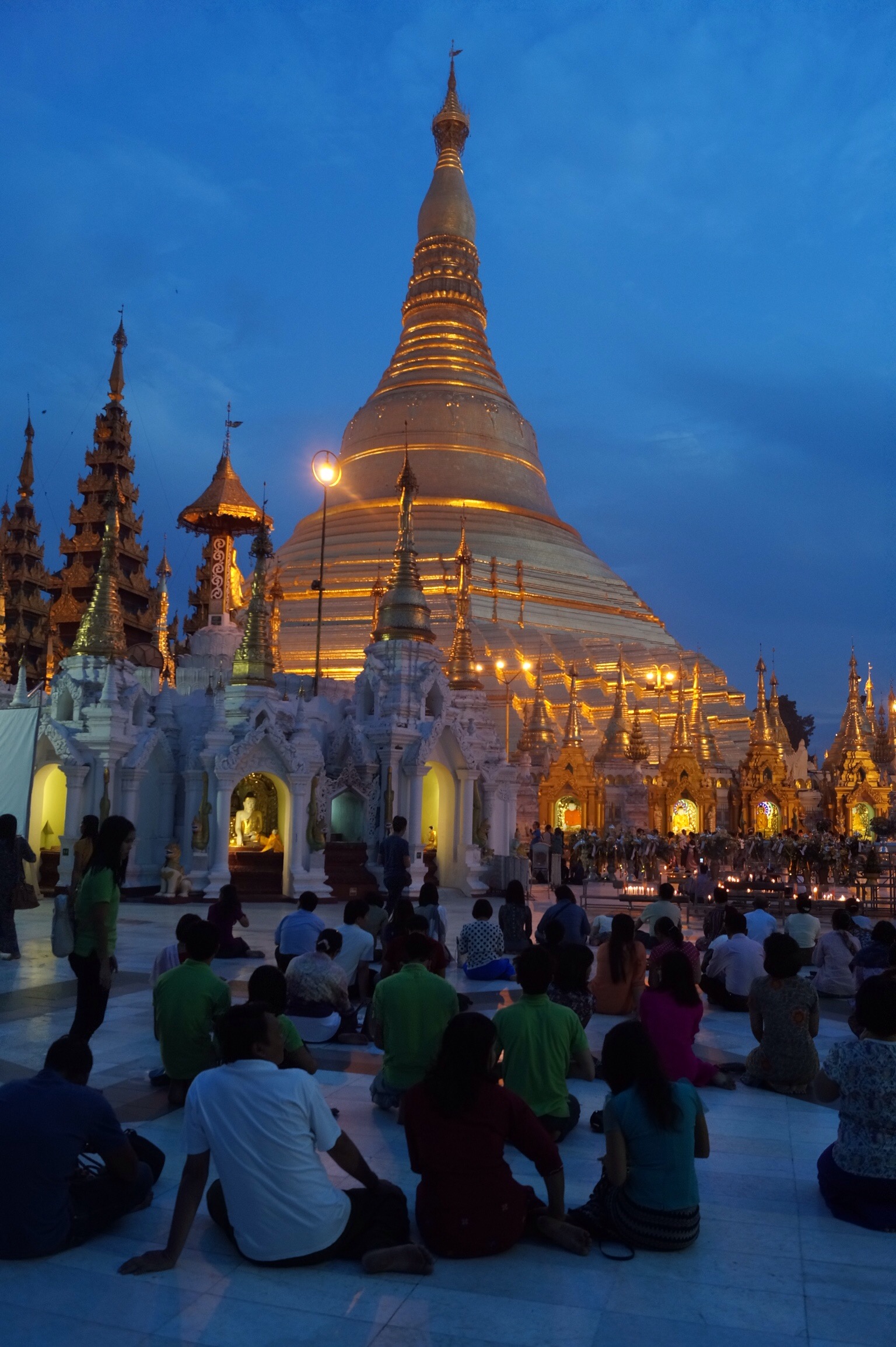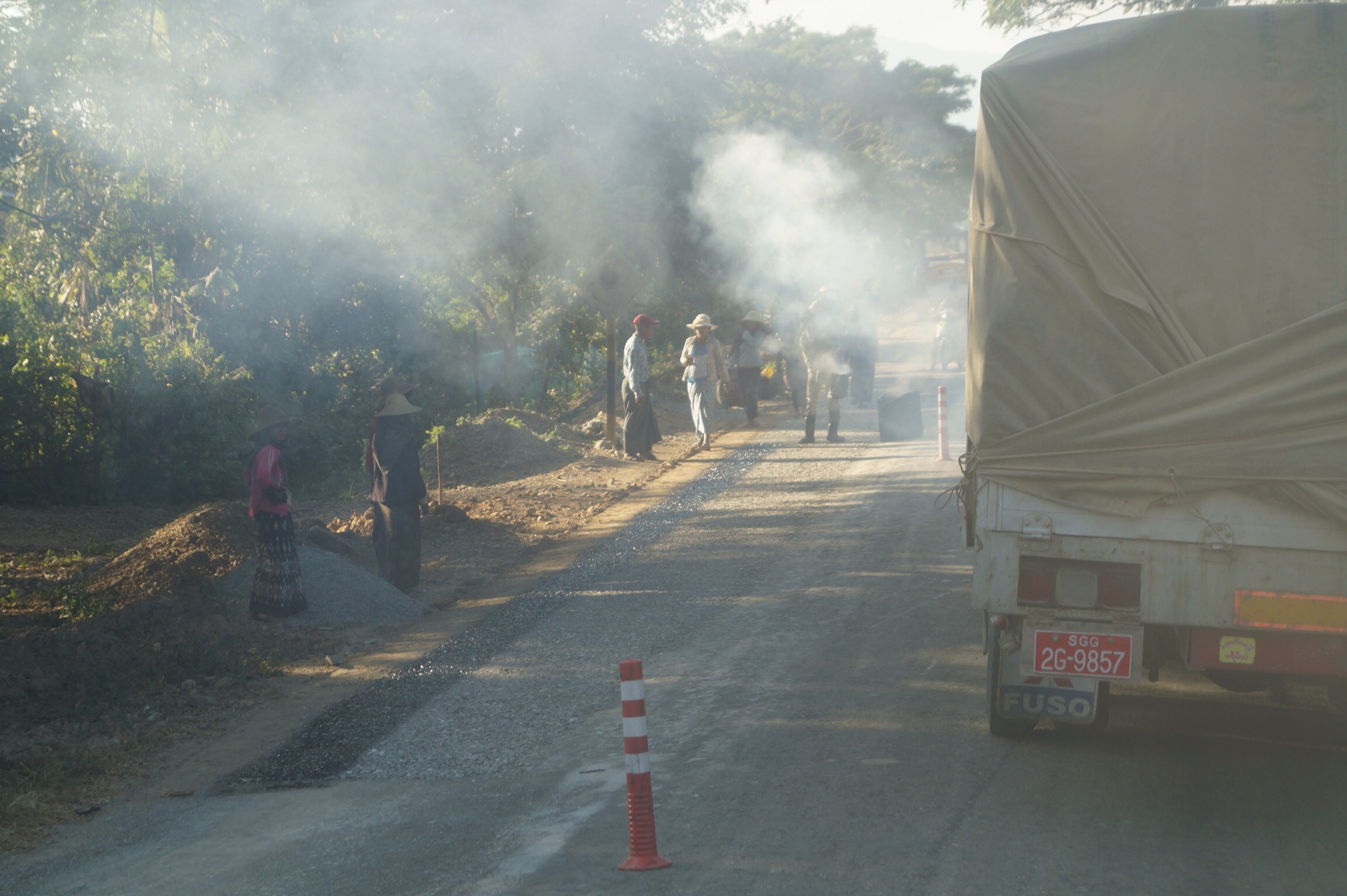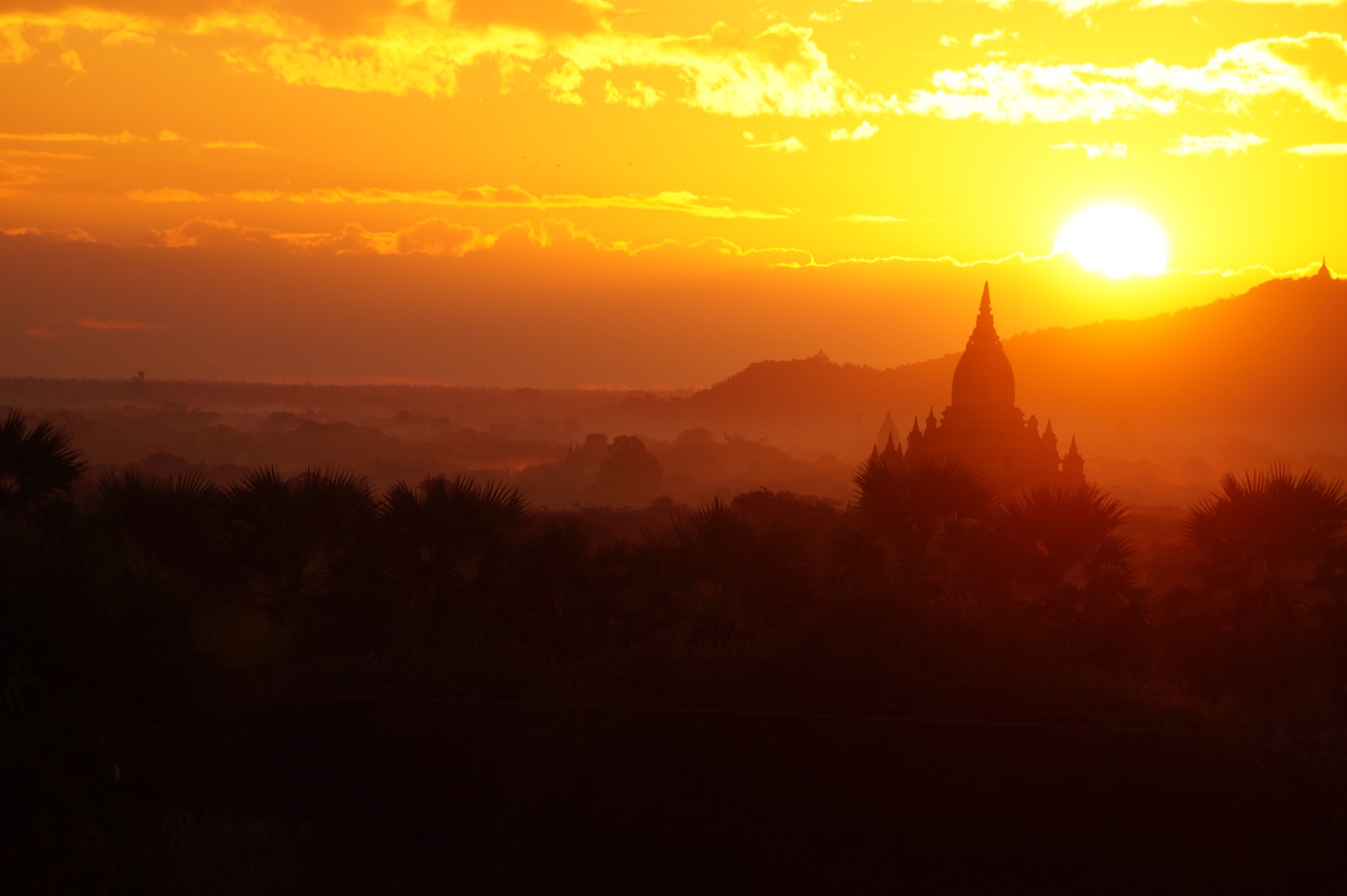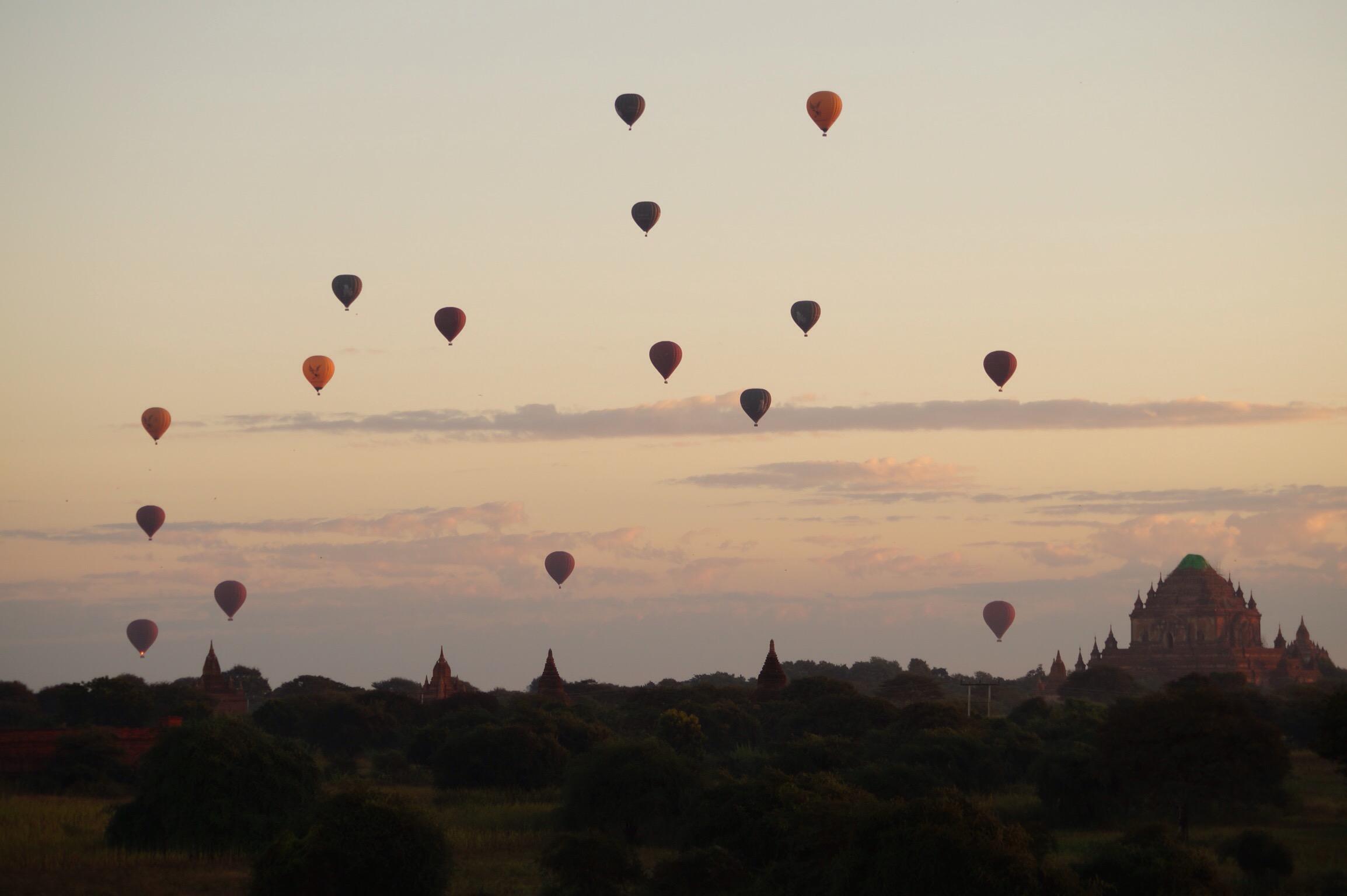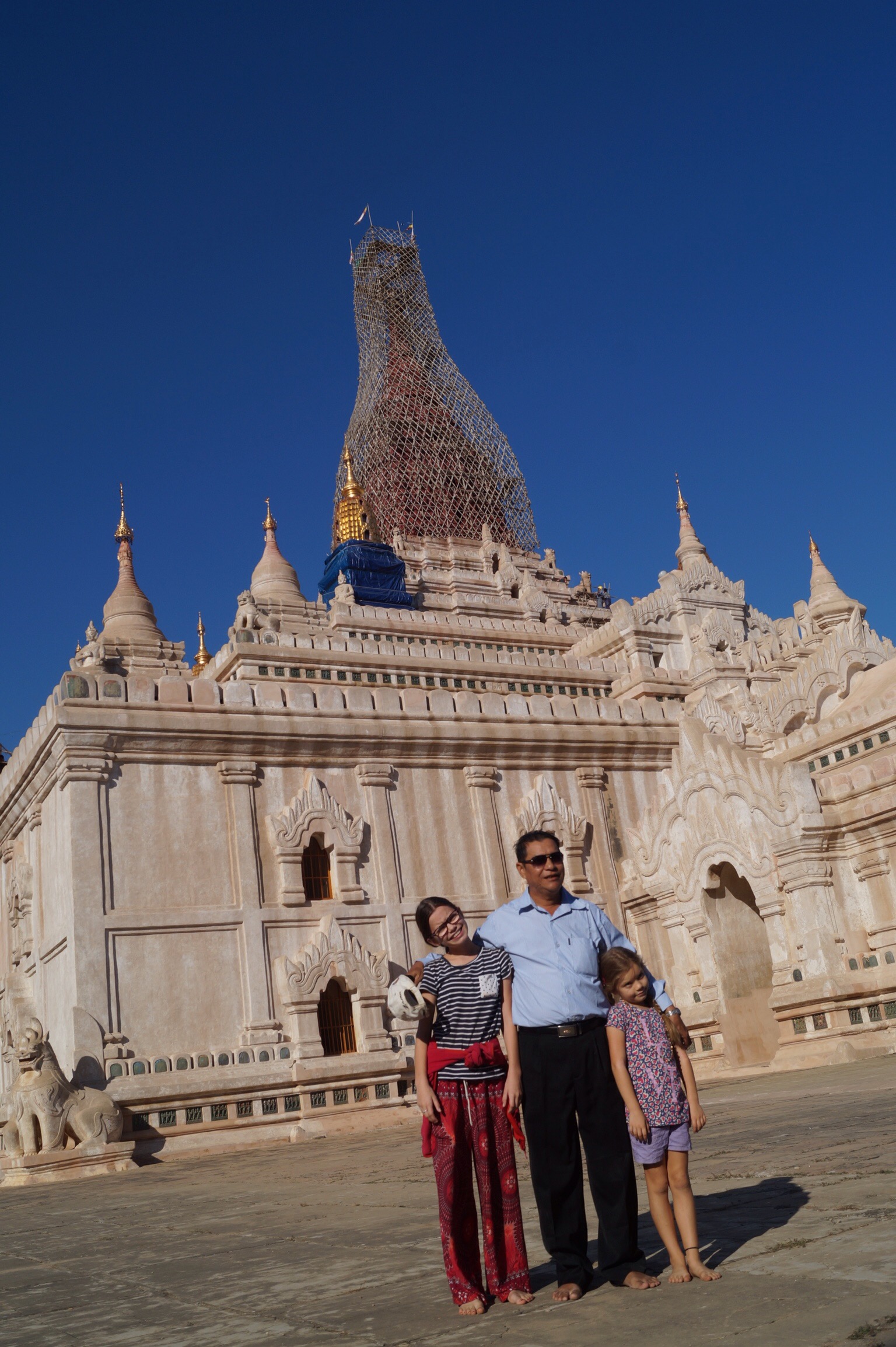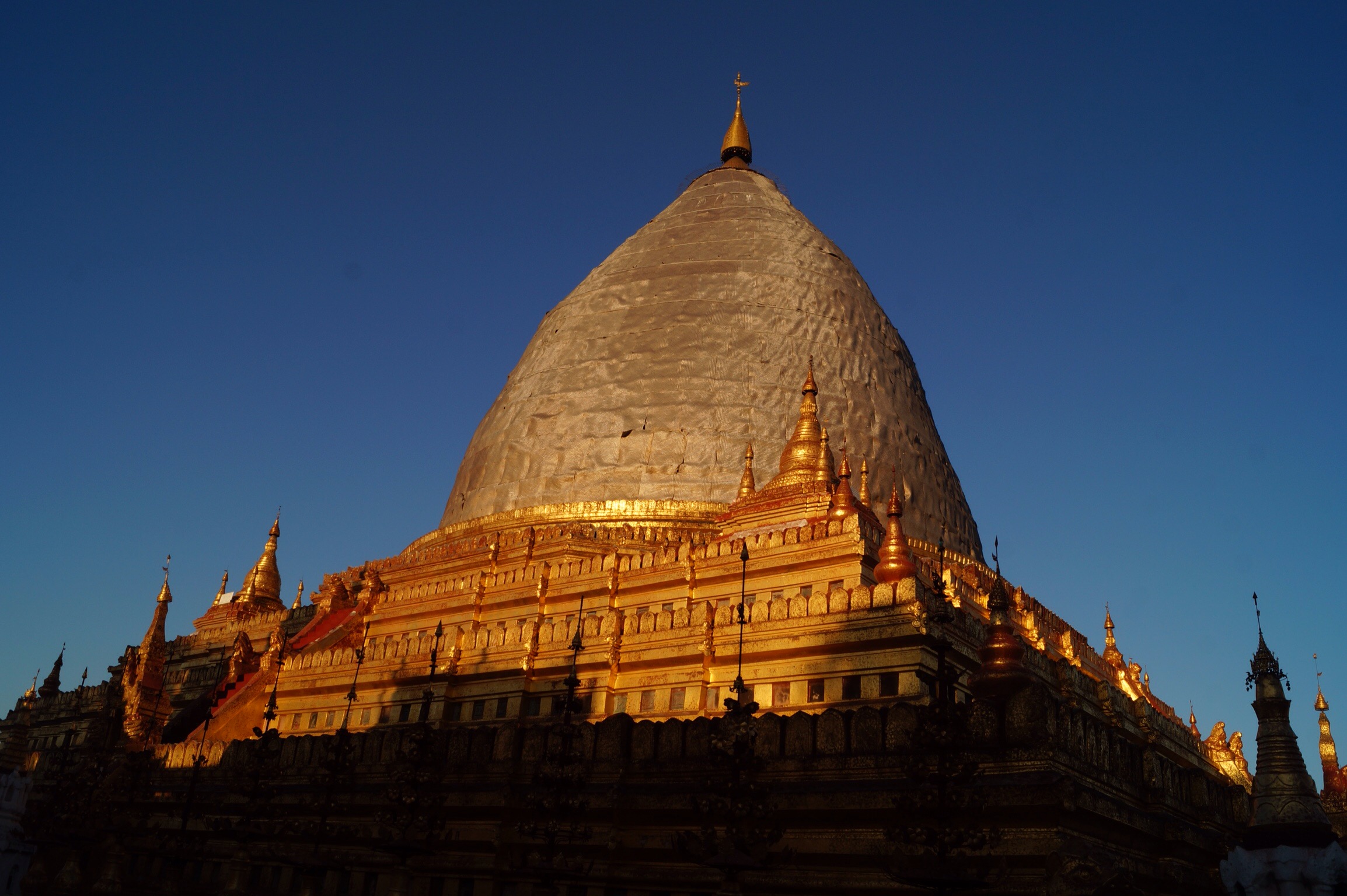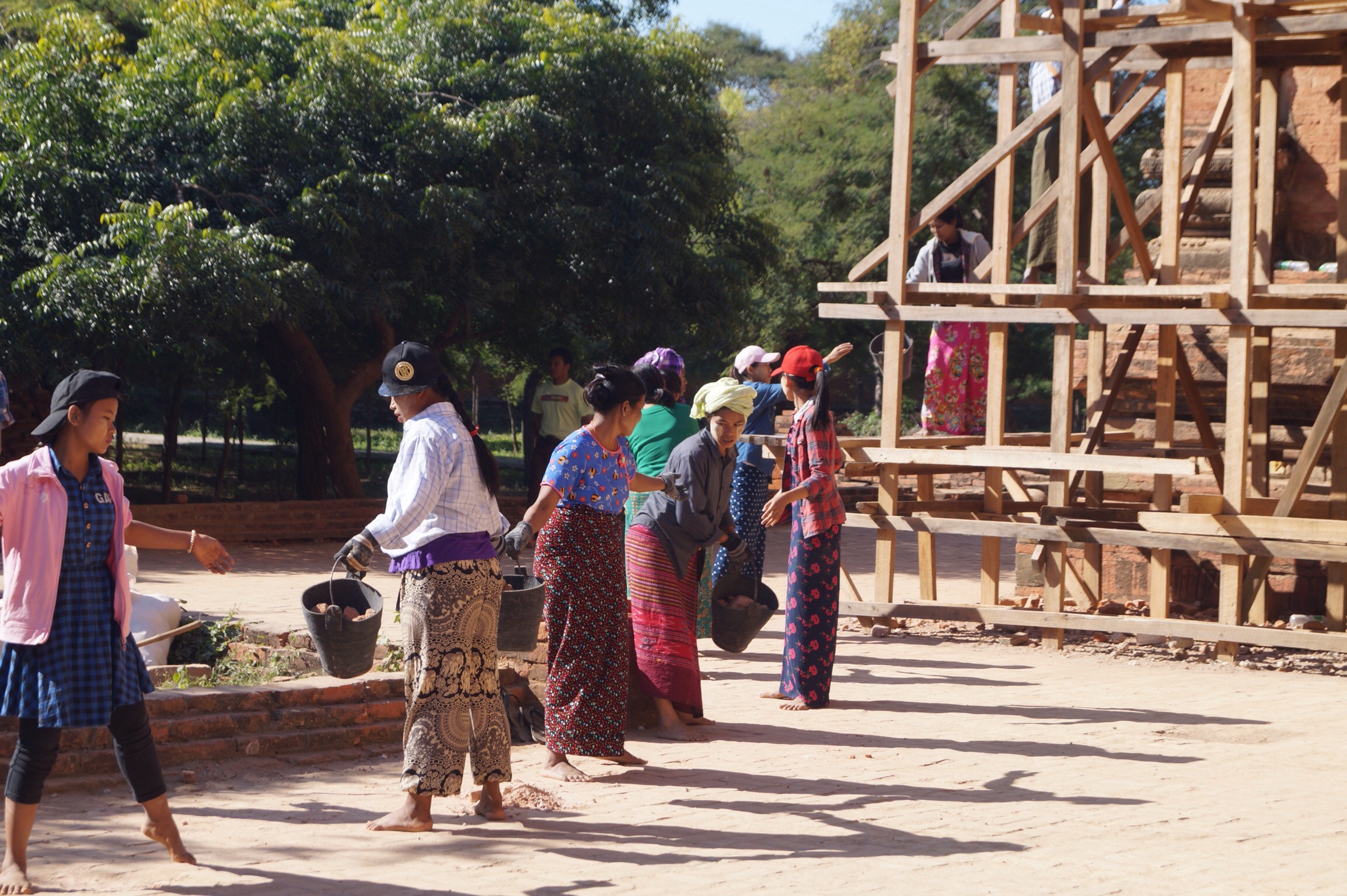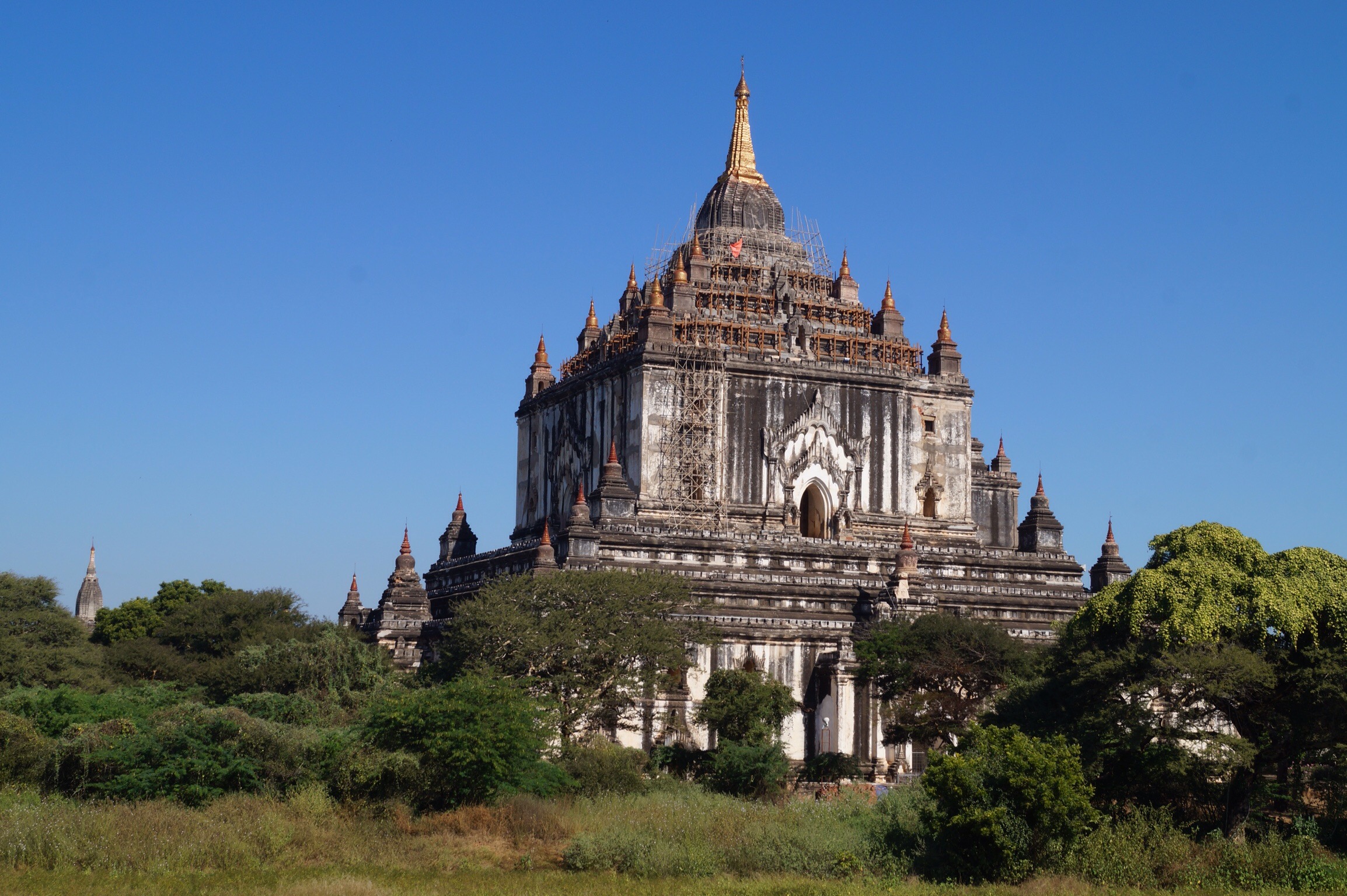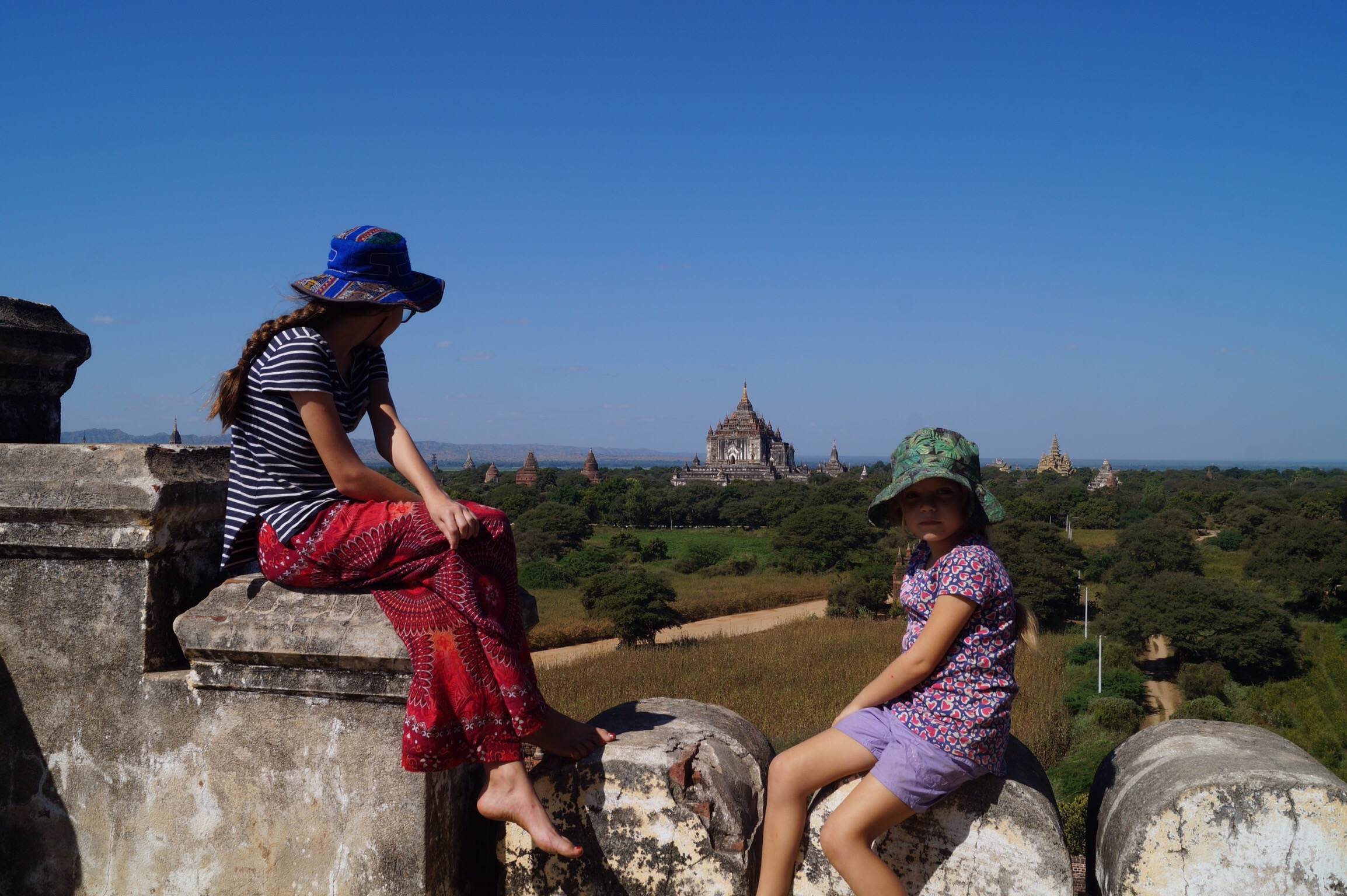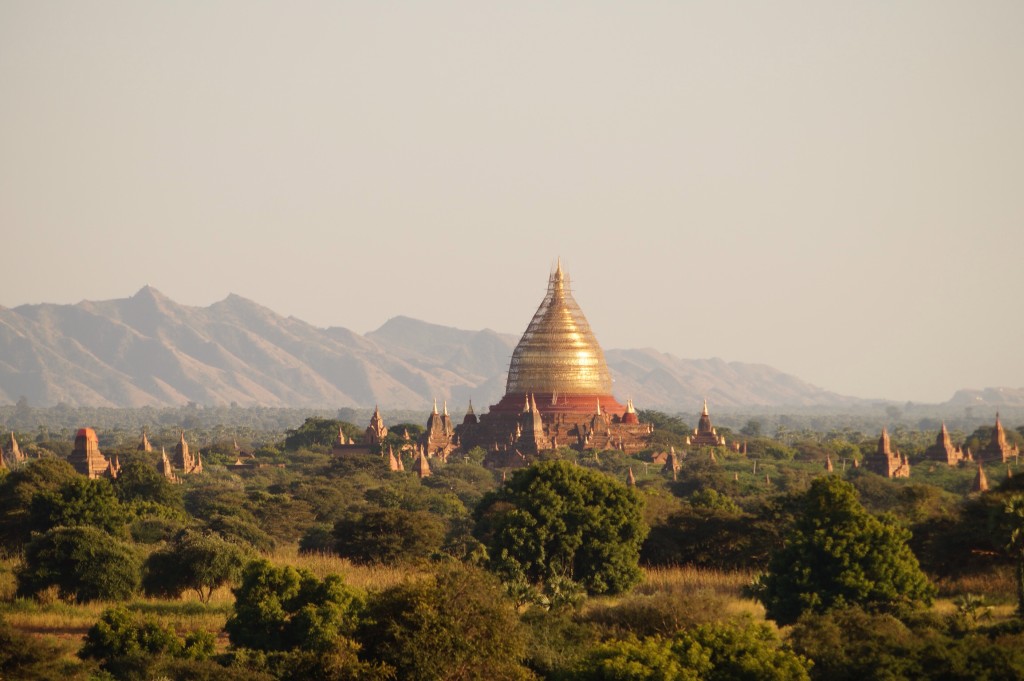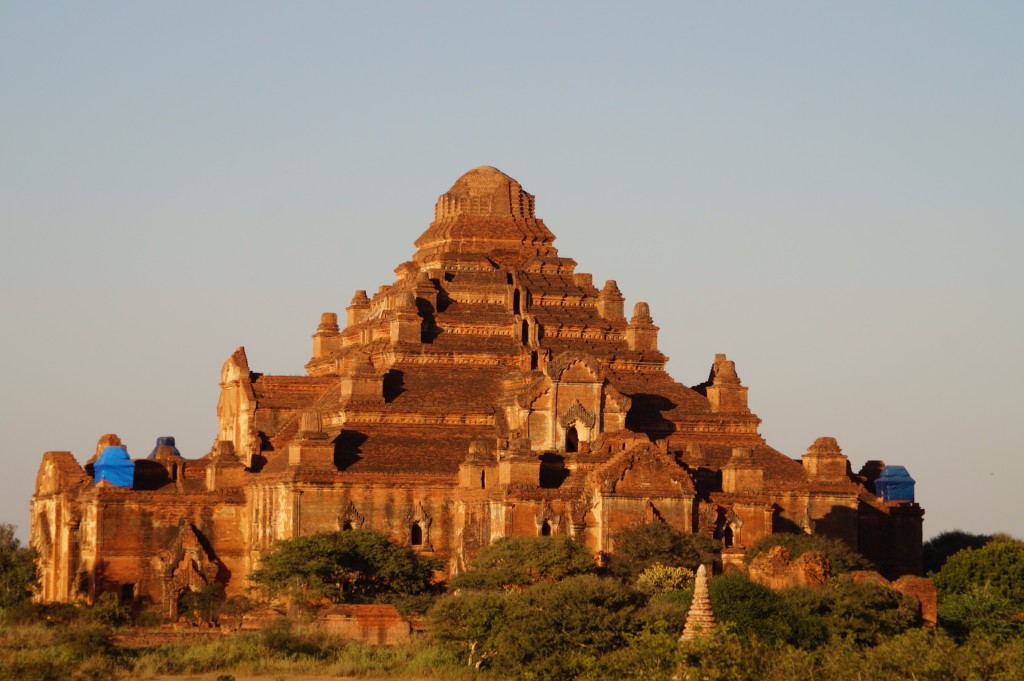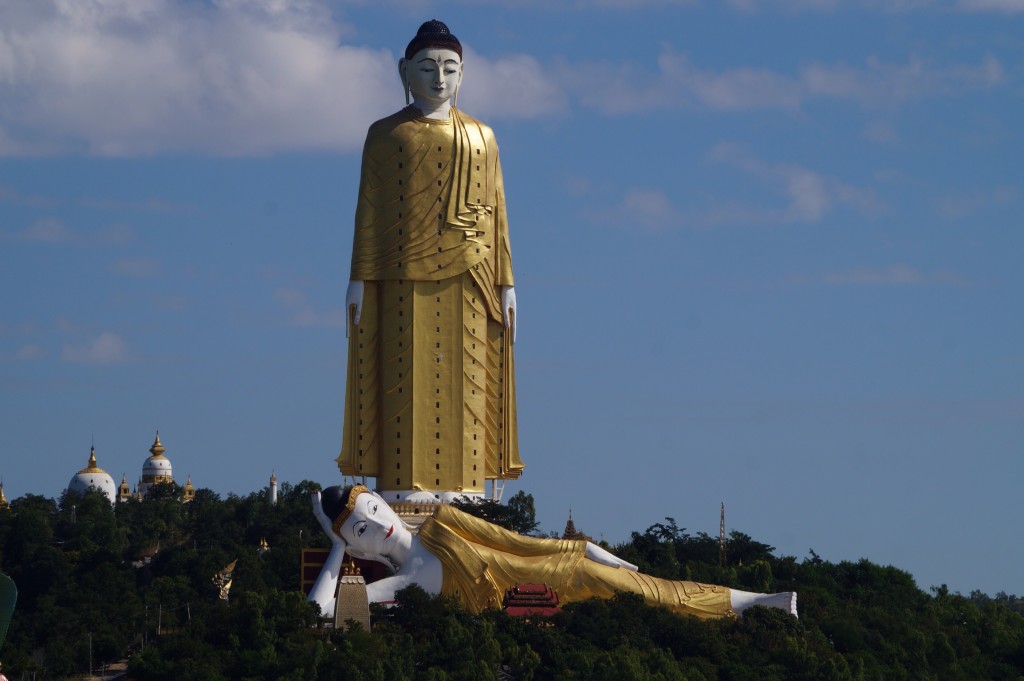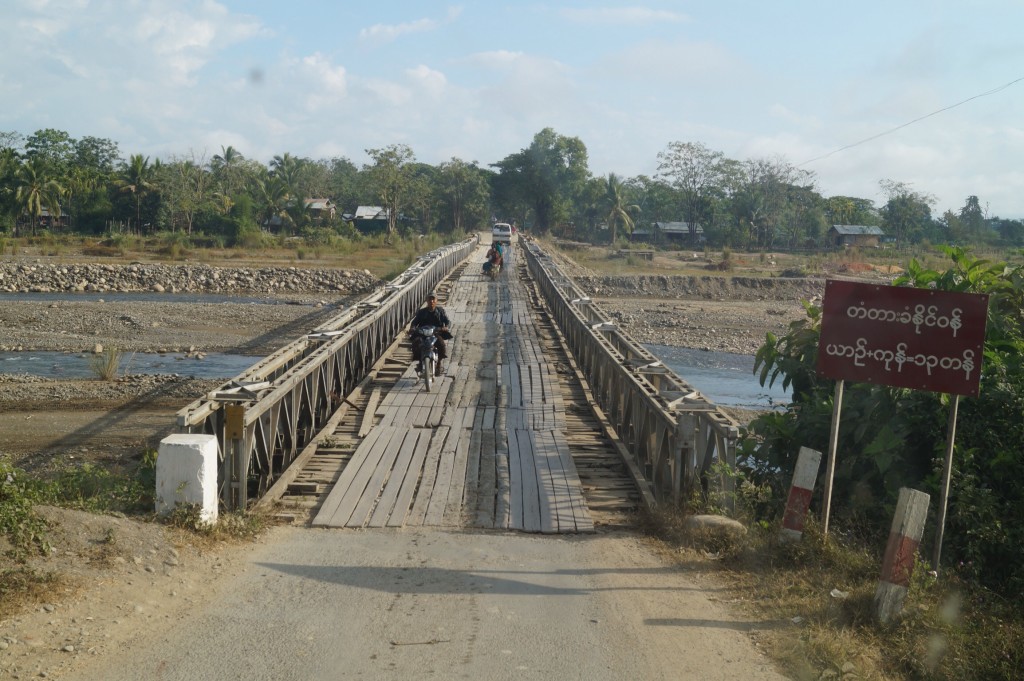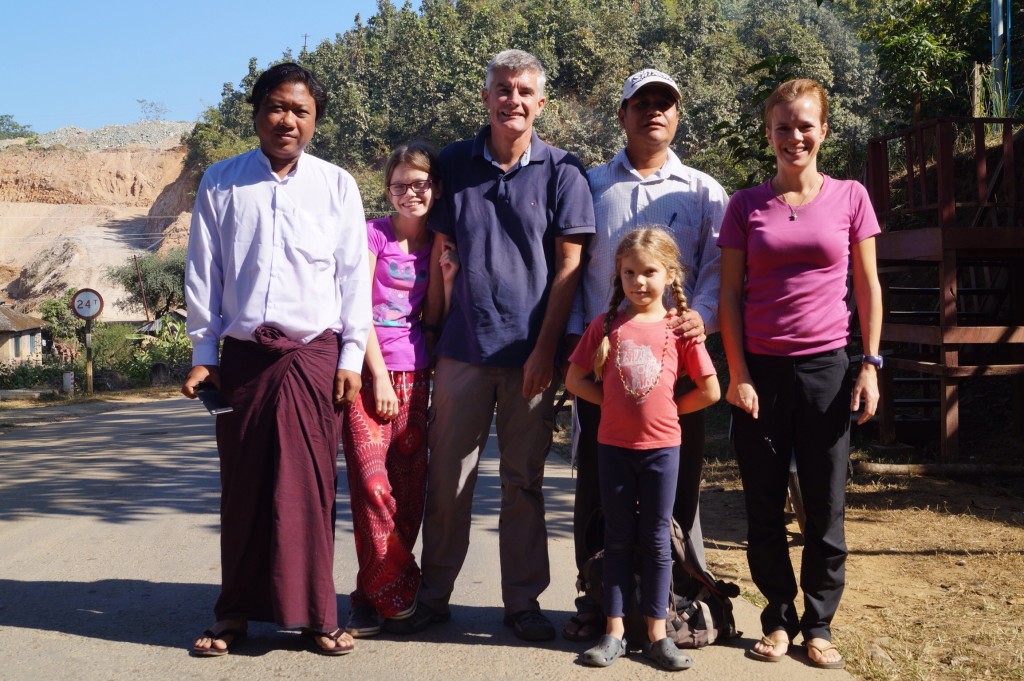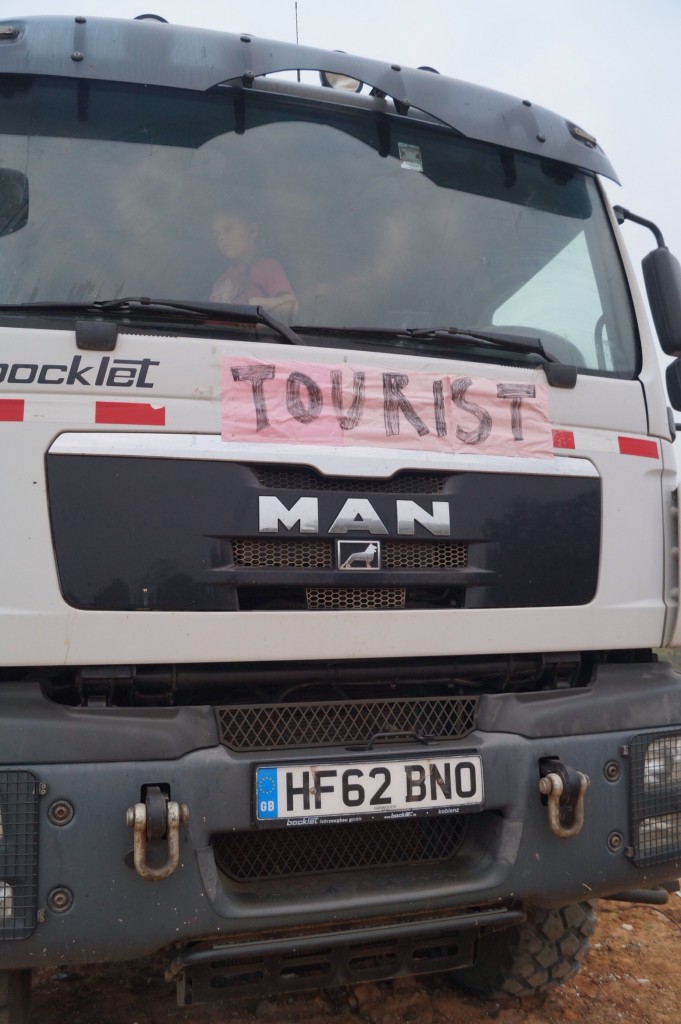It's not often you get to combine Christmas, rhinos and elephants in one blog but this was a good week. After our rather dodgy start to India last week, when we had to drive through the state on Manipur which is suffering from an economic blockage and civil unrest, we found a quiet place to park up for a few days. Beautiful Kaziranga National Park was just the sort of thing we were hoping for from this amazing country. On the banks of the Brahmaputra River, the huge floodplains have the highest concentration of Indian Rhinos in the world.

We were all tired and ready for a few days of staying in the same place as well as celebrating Christmas. Although Myanmar had been fabulous it had been pretty hectic, we find staying in hotels and eating out every night far more tiring than cooking ourselves and sleeping in the truck. After a scout around near the jeep stand, we asked at Aranya Hotel, one of the big Assam tourist organisation hotels that had a big garden if we could park up. It was a great place for a few days to try and get some jobs done on the truck, yet again our technical skills let us down but at least we now know what spare parts we need - if we can get hold of them.

We are feeling a lot better about travelling with the issues caused by India's currency problems. At the beginning of the month overnight with no warning the government removed the 500 and 1000 rupee notes, effectively removing 86% of the cash from circulation. The aim was to remove the black market economy and it sounds like it was a popular move with many people. It has caused widespread disruption to the economy though and we've yet to fully see how this is affecting the population. They introduced a new 2000 rupee note and have restricted ATM withdrawals to 2000 rupees ($30) a day. For us as travellers we were worried about how this would affect our ability to move around. We came from Myanmar fully stocked with food and fuel, not knowing what the current situation was. In the state of Manipur we had seen ATM queues 30-40 people long and we had heard that many ATMs all over the country had run out of cash. However on our first morning in Assam, passing through a small village I had called Steve to a halt when I saw a bank and it had cash. Just two days before the 2000R daily restriction had been lifted for foreigners, however that was still the transaction restriction. With no one in the queue (it was 6.30 am) and cash in the machine, Steve managed 9 transactions before our UK bank pulled the plug. Within half an hour we had the inevitable email from our UK bank: someone has been using your card unusually in India, yes we know - us. Even though we told them in advance that this would be the case, I think this is going to be a frequent phone call with the bank. The good news was that we now had cash, the slightly trickier news was that it was all in 2000R notes. In the end it has turned out the bigger problem for us was getting change. Buying vegies in the market, of course no one has change. National Park fees - no change. Even petrol stations are reluctant to part with their precious smaller notes. From my past memories of being in the country, Indians are wonderfully resourceful and the same seems to be happening now. The hotel was great at letting us run up a tab for parking, laundry, dinner and a jeep safari, we settled up the difference when we left.
We didn't just come to Kaziranga for a relax, we came to see rhinos. Rising over an hour before dawn, a taxi took us over rough tracks in through the fog in the pitch black to the edge of the park. It was so dark that we didn't see our steeds approaching till the last minute - elephants! We weren't sure we would see anything but the early pre-dawn light soon started to filter through the mists. The elephants were sure of foot on the boggy ground and it wasn't long before we saw our first rhinos, a mother and baby. Beautiful beasts and quite different from the African type. As it turned around, Alisha got a fit of the giggles "Look Mummy, it's got big saggy grey knickers on."
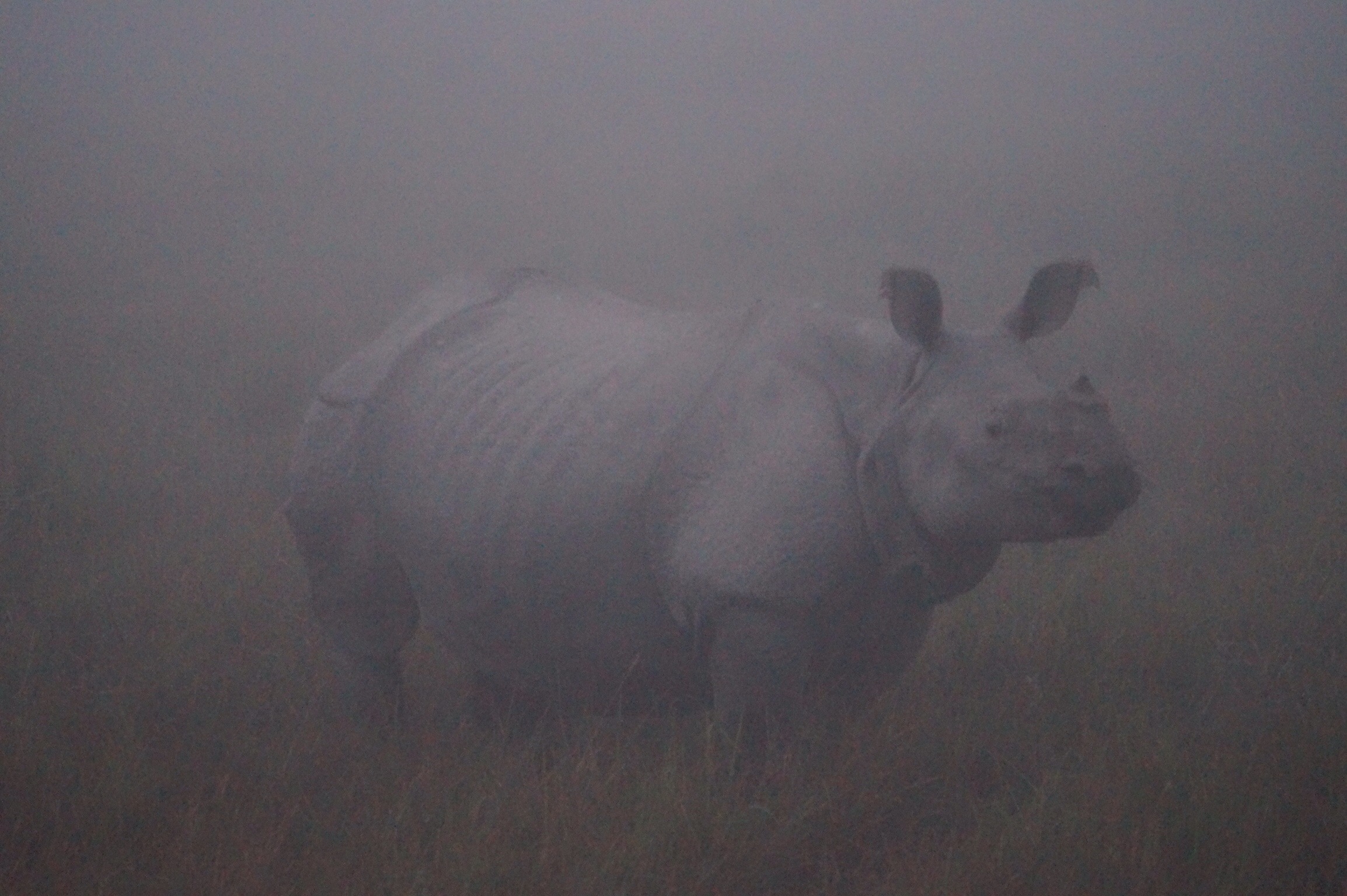
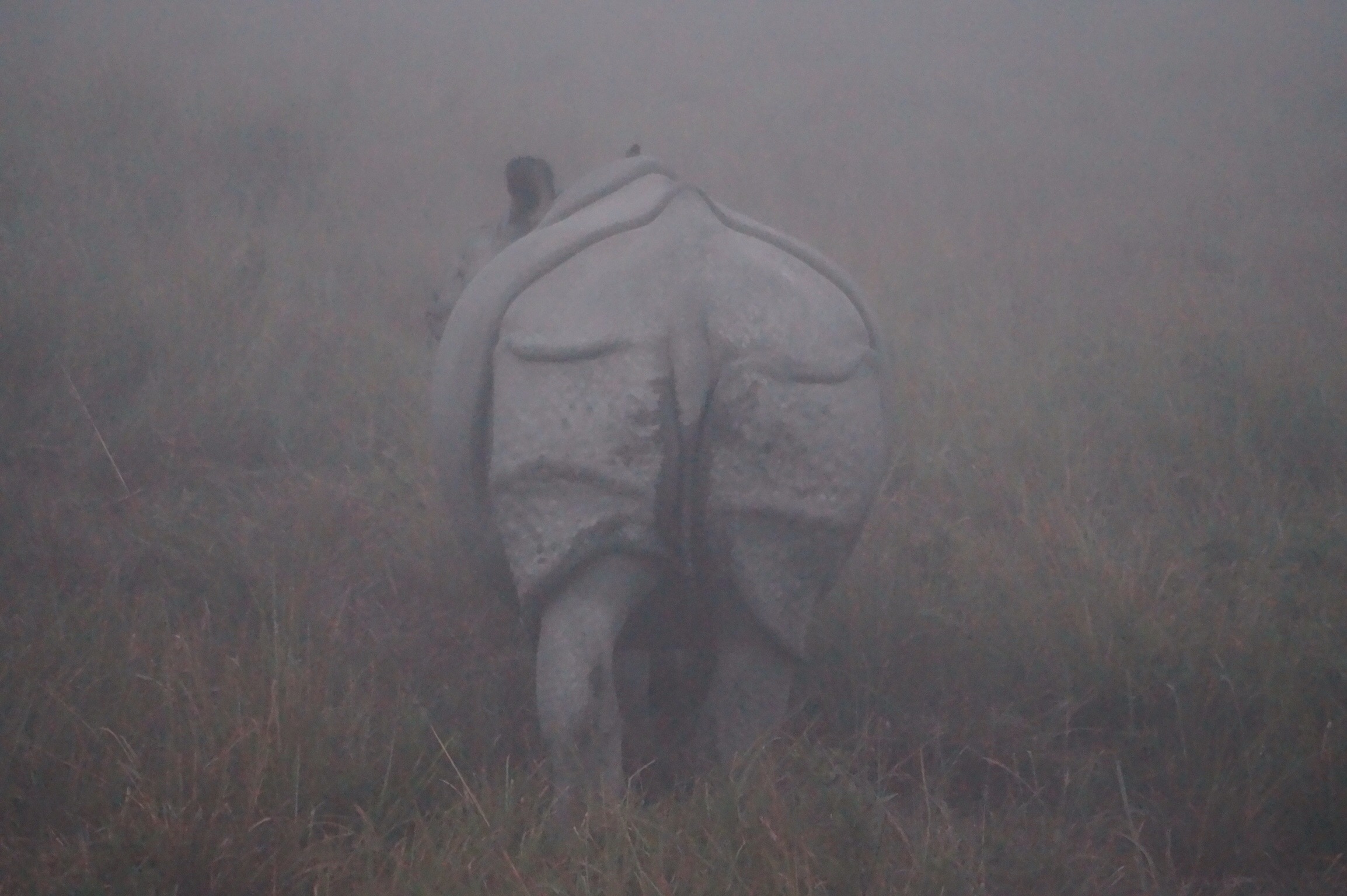

At times the well named "elephant grass", come up to our waists on top of the elephants but we were still able to see several more rhino, wild boar, wild buffalo and deer. Alisha's favourite was the tiny baby deer tucked into hiding places in the grass on top of the elephants we could see so well and although they moved, it didn't seem to worry them too much. Even our mahout was thrilled when we spotted a 3 day old baby rhino tucked down in a river bank, the mother didn't seem bothered by the elephants. Eventually the sun rose over the horizon and it was time to say goodbye to the elephants. The elephants seemed to be kept as a family group with their young walking alongside them. One naughty 10 month old male kept on getting under the feet of the herd, he was constantly getting a cuff from their trunks for getting in the way. As the adults discharged their riders the little ones wandered about, not asking for food but just saying hello.





That afternoon we went to another part of the park for a jeep safari and although we saw lots of rhino and other animals coming down to the water for a late afternoon drink, it wasn't quite as atmospheric as that morning.

Unsurprisingly, Christmas day started early for us with whispers from the girls at 5 am that "Santa, found us in India". They kept their word though and apart from the odd rustle as they felt their stocking, they didn't wake us till 6. Then it was the usual pile into our bed for their stockings, lazy breakfast and presents. We had been so impressed with the girls with their requests for presents they both said "Just surprise us with something nice but we hope Santa remembers to give us a toothbrush like every year." Knowing we would have only just arrived in India, we had done most of our shopping in Chiang Mai when we had time. We didn't even have enough time to make any decorations. In the end Lucy and I cobbled together a last minute Christmas tree from Lego. The rest of the day passed in a blur of playing and eating, unfortunately I didn't find a church nearby to go to. Steve purchased a very fresh chicken from the market, it was still clucking when he paid but luckily they offered the full service for their more squeamish customers. It made a very tasty dinner with roast potatoes, vegies and Alisha's famous apple pie for tea.


Our usual post dinner Christmas lunch, was slightly different this year. We wandered along the dirt road to the picnic grounds nearby, as it was a national holiday and a Sunday it was heaving with people picnics. No soggy sandwiches or sad looking cake for the Indians, they bought massive cooking pots, built fires and cooked up curries for their big parties. Each group had its own stereo system blasting out Bollywood hits at full volume. We were really pleased we had found a relatively quiet spot nearby for our time here.


A rubber drying house, the rubber is collected from trees then made into sheets.
It was our fourth Christmas on the road: Belize, Argentina, Australia and now India. They have all been unique, creating wonderful memories.
After 5 nights in one place, we were raring to go on Boxing Day. Whilst driving along the main road that splits the park in two, we saw 2 more rhinos and a herd of wild elephants enjoying an early morning bathe in a tea plantation.

It was a long days drive, getting half way to our next planned stop in Sikkim, with a stop overnight in a hotel's garden. Our average speed has come right down in Asia due to the roads and volume of traffic, making an average of just 40kph. So Steve was delighted to find the road turning into a dual-carriage way. What wasn't so wonderful was the large numbers of bikes, motorbikes, auto rickshaws and even cars going the wrong way along the dual-carriage way in the fast lane!
 We were all tired and ready for a few days of staying in the same place as well as celebrating Christmas. Although Myanmar had been fabulous it had been pretty hectic, we find staying in hotels and eating out every night far more tiring than cooking ourselves and sleeping in the truck. After a scout around near the jeep stand, we asked at Aranya Hotel, one of the big Assam tourist organisation hotels that had a big garden if we could park up. It was a great place for a few days to try and get some jobs done on the truck, yet again our technical skills let us down but at least we now know what spare parts we need - if we can get hold of them.
We were all tired and ready for a few days of staying in the same place as well as celebrating Christmas. Although Myanmar had been fabulous it had been pretty hectic, we find staying in hotels and eating out every night far more tiring than cooking ourselves and sleeping in the truck. After a scout around near the jeep stand, we asked at Aranya Hotel, one of the big Assam tourist organisation hotels that had a big garden if we could park up. It was a great place for a few days to try and get some jobs done on the truck, yet again our technical skills let us down but at least we now know what spare parts we need - if we can get hold of them.
 We are feeling a lot better about travelling with the issues caused by India's currency problems. At the beginning of the month overnight with no warning the government removed the 500 and 1000 rupee notes, effectively removing 86% of the cash from circulation. The aim was to remove the black market economy and it sounds like it was a popular move with many people. It has caused widespread disruption to the economy though and we've yet to fully see how this is affecting the population. They introduced a new 2000 rupee note and have restricted ATM withdrawals to 2000 rupees ($30) a day. For us as travellers we were worried about how this would affect our ability to move around. We came from Myanmar fully stocked with food and fuel, not knowing what the current situation was. In the state of Manipur we had seen ATM queues 30-40 people long and we had heard that many ATMs all over the country had run out of cash. However on our first morning in Assam, passing through a small village I had called Steve to a halt when I saw a bank and it had cash. Just two days before the 2000R daily restriction had been lifted for foreigners, however that was still the transaction restriction. With no one in the queue (it was 6.30 am) and cash in the machine, Steve managed 9 transactions before our UK bank pulled the plug. Within half an hour we had the inevitable email from our UK bank: someone has been using your card unusually in India, yes we know - us. Even though we told them in advance that this would be the case, I think this is going to be a frequent phone call with the bank. The good news was that we now had cash, the slightly trickier news was that it was all in 2000R notes. In the end it has turned out the bigger problem for us was getting change. Buying vegies in the market, of course no one has change. National Park fees - no change. Even petrol stations are reluctant to part with their precious smaller notes. From my past memories of being in the country, Indians are wonderfully resourceful and the same seems to be happening now. The hotel was great at letting us run up a tab for parking, laundry, dinner and a jeep safari, we settled up the difference when we left.
We didn't just come to Kaziranga for a relax, we came to see rhinos. Rising over an hour before dawn, a taxi took us over rough tracks in through the fog in the pitch black to the edge of the park. It was so dark that we didn't see our steeds approaching till the last minute - elephants! We weren't sure we would see anything but the early pre-dawn light soon started to filter through the mists. The elephants were sure of foot on the boggy ground and it wasn't long before we saw our first rhinos, a mother and baby. Beautiful beasts and quite different from the African type. As it turned around, Alisha got a fit of the giggles "Look Mummy, it's got big saggy grey knickers on."
We are feeling a lot better about travelling with the issues caused by India's currency problems. At the beginning of the month overnight with no warning the government removed the 500 and 1000 rupee notes, effectively removing 86% of the cash from circulation. The aim was to remove the black market economy and it sounds like it was a popular move with many people. It has caused widespread disruption to the economy though and we've yet to fully see how this is affecting the population. They introduced a new 2000 rupee note and have restricted ATM withdrawals to 2000 rupees ($30) a day. For us as travellers we were worried about how this would affect our ability to move around. We came from Myanmar fully stocked with food and fuel, not knowing what the current situation was. In the state of Manipur we had seen ATM queues 30-40 people long and we had heard that many ATMs all over the country had run out of cash. However on our first morning in Assam, passing through a small village I had called Steve to a halt when I saw a bank and it had cash. Just two days before the 2000R daily restriction had been lifted for foreigners, however that was still the transaction restriction. With no one in the queue (it was 6.30 am) and cash in the machine, Steve managed 9 transactions before our UK bank pulled the plug. Within half an hour we had the inevitable email from our UK bank: someone has been using your card unusually in India, yes we know - us. Even though we told them in advance that this would be the case, I think this is going to be a frequent phone call with the bank. The good news was that we now had cash, the slightly trickier news was that it was all in 2000R notes. In the end it has turned out the bigger problem for us was getting change. Buying vegies in the market, of course no one has change. National Park fees - no change. Even petrol stations are reluctant to part with their precious smaller notes. From my past memories of being in the country, Indians are wonderfully resourceful and the same seems to be happening now. The hotel was great at letting us run up a tab for parking, laundry, dinner and a jeep safari, we settled up the difference when we left.
We didn't just come to Kaziranga for a relax, we came to see rhinos. Rising over an hour before dawn, a taxi took us over rough tracks in through the fog in the pitch black to the edge of the park. It was so dark that we didn't see our steeds approaching till the last minute - elephants! We weren't sure we would see anything but the early pre-dawn light soon started to filter through the mists. The elephants were sure of foot on the boggy ground and it wasn't long before we saw our first rhinos, a mother and baby. Beautiful beasts and quite different from the African type. As it turned around, Alisha got a fit of the giggles "Look Mummy, it's got big saggy grey knickers on."


 At times the well named "elephant grass", come up to our waists on top of the elephants but we were still able to see several more rhino, wild boar, wild buffalo and deer. Alisha's favourite was the tiny baby deer tucked into hiding places in the grass on top of the elephants we could see so well and although they moved, it didn't seem to worry them too much. Even our mahout was thrilled when we spotted a 3 day old baby rhino tucked down in a river bank, the mother didn't seem bothered by the elephants. Eventually the sun rose over the horizon and it was time to say goodbye to the elephants. The elephants seemed to be kept as a family group with their young walking alongside them. One naughty 10 month old male kept on getting under the feet of the herd, he was constantly getting a cuff from their trunks for getting in the way. As the adults discharged their riders the little ones wandered about, not asking for food but just saying hello.
At times the well named "elephant grass", come up to our waists on top of the elephants but we were still able to see several more rhino, wild boar, wild buffalo and deer. Alisha's favourite was the tiny baby deer tucked into hiding places in the grass on top of the elephants we could see so well and although they moved, it didn't seem to worry them too much. Even our mahout was thrilled when we spotted a 3 day old baby rhino tucked down in a river bank, the mother didn't seem bothered by the elephants. Eventually the sun rose over the horizon and it was time to say goodbye to the elephants. The elephants seemed to be kept as a family group with their young walking alongside them. One naughty 10 month old male kept on getting under the feet of the herd, he was constantly getting a cuff from their trunks for getting in the way. As the adults discharged their riders the little ones wandered about, not asking for food but just saying hello.




 That afternoon we went to another part of the park for a jeep safari and although we saw lots of rhino and other animals coming down to the water for a late afternoon drink, it wasn't quite as atmospheric as that morning.
That afternoon we went to another part of the park for a jeep safari and although we saw lots of rhino and other animals coming down to the water for a late afternoon drink, it wasn't quite as atmospheric as that morning.
 Unsurprisingly, Christmas day started early for us with whispers from the girls at 5 am that "Santa, found us in India". They kept their word though and apart from the odd rustle as they felt their stocking, they didn't wake us till 6. Then it was the usual pile into our bed for their stockings, lazy breakfast and presents. We had been so impressed with the girls with their requests for presents they both said "Just surprise us with something nice but we hope Santa remembers to give us a toothbrush like every year." Knowing we would have only just arrived in India, we had done most of our shopping in Chiang Mai when we had time. We didn't even have enough time to make any decorations. In the end Lucy and I cobbled together a last minute Christmas tree from Lego. The rest of the day passed in a blur of playing and eating, unfortunately I didn't find a church nearby to go to. Steve purchased a very fresh chicken from the market, it was still clucking when he paid but luckily they offered the full service for their more squeamish customers. It made a very tasty dinner with roast potatoes, vegies and Alisha's famous apple pie for tea.
Unsurprisingly, Christmas day started early for us with whispers from the girls at 5 am that "Santa, found us in India". They kept their word though and apart from the odd rustle as they felt their stocking, they didn't wake us till 6. Then it was the usual pile into our bed for their stockings, lazy breakfast and presents. We had been so impressed with the girls with their requests for presents they both said "Just surprise us with something nice but we hope Santa remembers to give us a toothbrush like every year." Knowing we would have only just arrived in India, we had done most of our shopping in Chiang Mai when we had time. We didn't even have enough time to make any decorations. In the end Lucy and I cobbled together a last minute Christmas tree from Lego. The rest of the day passed in a blur of playing and eating, unfortunately I didn't find a church nearby to go to. Steve purchased a very fresh chicken from the market, it was still clucking when he paid but luckily they offered the full service for their more squeamish customers. It made a very tasty dinner with roast potatoes, vegies and Alisha's famous apple pie for tea. 
 Our usual post dinner Christmas lunch, was slightly different this year. We wandered along the dirt road to the picnic grounds nearby, as it was a national holiday and a Sunday it was heaving with people picnics. No soggy sandwiches or sad looking cake for the Indians, they bought massive cooking pots, built fires and cooked up curries for their big parties. Each group had its own stereo system blasting out Bollywood hits at full volume. We were really pleased we had found a relatively quiet spot nearby for our time here.
Our usual post dinner Christmas lunch, was slightly different this year. We wandered along the dirt road to the picnic grounds nearby, as it was a national holiday and a Sunday it was heaving with people picnics. No soggy sandwiches or sad looking cake for the Indians, they bought massive cooking pots, built fires and cooked up curries for their big parties. Each group had its own stereo system blasting out Bollywood hits at full volume. We were really pleased we had found a relatively quiet spot nearby for our time here.

 A rubber drying house, the rubber is collected from trees then made into sheets.
It was our fourth Christmas on the road: Belize, Argentina, Australia and now India. They have all been unique, creating wonderful memories.
After 5 nights in one place, we were raring to go on Boxing Day. Whilst driving along the main road that splits the park in two, we saw 2 more rhinos and a herd of wild elephants enjoying an early morning bathe in a tea plantation.
A rubber drying house, the rubber is collected from trees then made into sheets.
It was our fourth Christmas on the road: Belize, Argentina, Australia and now India. They have all been unique, creating wonderful memories.
After 5 nights in one place, we were raring to go on Boxing Day. Whilst driving along the main road that splits the park in two, we saw 2 more rhinos and a herd of wild elephants enjoying an early morning bathe in a tea plantation.
 It was a long days drive, getting half way to our next planned stop in Sikkim, with a stop overnight in a hotel's garden. Our average speed has come right down in Asia due to the roads and volume of traffic, making an average of just 40kph. So Steve was delighted to find the road turning into a dual-carriage way. What wasn't so wonderful was the large numbers of bikes, motorbikes, auto rickshaws and even cars going the wrong way along the dual-carriage way in the fast lane!
It was a long days drive, getting half way to our next planned stop in Sikkim, with a stop overnight in a hotel's garden. Our average speed has come right down in Asia due to the roads and volume of traffic, making an average of just 40kph. So Steve was delighted to find the road turning into a dual-carriage way. What wasn't so wonderful was the large numbers of bikes, motorbikes, auto rickshaws and even cars going the wrong way along the dual-carriage way in the fast lane!

